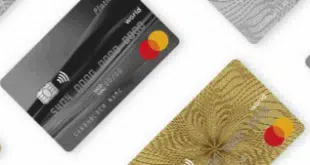Riding the swelling wave of issuer interest in contactless payment cards, Minneapolis-based U.S. Bancorp this week launched a program to issue Visa Inc.'s payWave contactless cards on debit accounts in California, Colorado, Missouri, and Utah. The bank didn't say how many cards it plans to issue. Customers who already have a U.S. Bank debit card can visit any local branch to request a new payWave card, while selected customers in California and Missouri will be automatically upgraded to payWave cards. U.S. Bank, which has a huge geographic footprint stretching from Ohio to the West Coast, has 736 branches in California, Colorado, Missouri, and Utah. Some 7,000 merchant locations in the four states accept payWave, a spokesperson tells Digital Transactions News by e-mail. “We chose these states because there is a high penetration of merchants that accept payWave, and a high concentration of customers who are already making purchases at these payWave merchants,” the spokesperson says. “Denver and St. Louis are also 'PowerBank' markets for U.S. Bank, where we have made significant investments in our retail operations in order to reach or solidify our high market-share position.” U.S. Bank began testing contactless Visa cards in Denver in late 2006 (Digital Transactions News, Nov. 22, 2006). The spokesperson says “it is possible” U.S. Bank will expand payWave issuance beyond the four states, but currently has no such plans. The spokesperson also wouldn't say if Visa is supporting the initiative financially. A Visa spokesperson could not be reached for comment. U.S. Bank is just the latest financial institution to announce a major contactless card initiative. Wells Fargo & Co., a U.S. Bank rival in many states, is an issuer. Washington Mutual Inc. recently announced plans to issue up to 15 million MasterCard PayPass cards, a move that could put WaMu ahead of JPMorgan Chase & Co. as the biggest contactless card issuer. But researchers say consumers still aren't using the cards much for contactless transactions, and only about 55,000 U.S. merchant locations accept them?a figure that includes about 10,000 New York City taxicabs (Digital Transactions News, May 14). Lack of acceptance locations, however, is cited by experts as a leading reason for anemic usage. By concentrating its issuance in four states where a relatively high percentage of merchants accept contactless cards, U.S. Bank may be able to encourage higher adoption rates. Also, as the banking industry consolidates, contactless cards could prove to be a marketing advantage as the survivors move into new territories and defend existing markets, all the while trying to attract customers open to using new technologies. The Denver and St. Louis areas happen to be two cities where U.S. Bank faces tough competition. According to the Federal Deposit Insurance Corp. figures for June 30, 2007, the latest available, U.S. Bank had 10.9% of deposits in the Denver-Aurora, Colo., metropolitan area, good for third place. Wells Fargo is tops in the Denver area with 19.8% of deposits and FirstBank Holding Co. is No. 2 with 11.5%. In the St. Louis area, U.S. Bank is the market leader with 15.9% of deposits compared with 12.9% for Bank of America Corp. But BofA is expanding its Midwestern presence and this year became a major player in Chicago and Michigan with its acquisition of LaSalle Bank. In a related move, U.S. Bank also said it is working with USA Technologies Inc to install contactless card-reading vending machines in the Denver area. The deal marks an expansion of Malvern, Pa.-based USA Technologies' dealings with payments firms. The company has worked closely with MasterCard Inc. to get its contactless card readers installed in vending machines.
Check Also
Mastercard Reckons With a Cap One Impact As Its Crypto Investment Grows
The payments industry may soon be wrestling with the fallout from the upcoming $35-billion merger …




